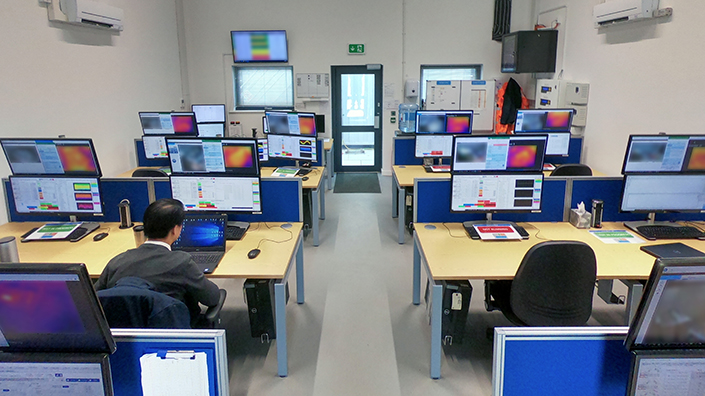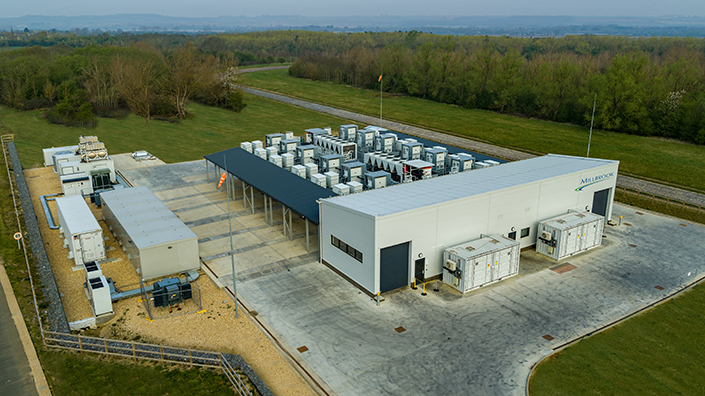Hybrid and battery cars are the most prominent alternative, with all major manufacturers now releasing electric models. According to the Society of Motor Manufacturers and Traders (SMMT), the number of ‘zero-emission capable’ models available in the UK tripled to more than 80 in the past five years – and about 200 more are expected in the coming years.
In August, SMMT figures revealed that sales of electric and fuel-cell cars leapt 110%, but they still only account for a small percentage of cars on the road. Challenges include higher prices and ‘range anxiety’, which still holds back 38% of buyers.
The rapidly expanding sector must also contend with issues long since faced by the internal combustion engine. Lithium is in danger of becoming a scarce resource, and is environmentally damaging to mine. And although batteries offer improved safety over flammable fossil fuels, a lack of standardisation requires stringent checks for fire and explosion risks.
All this means one thing for the long-established yet still relatively novel technology – testing, lots of it. One place offering that is Millbrook Proving Ground in Bedfordshire, where new batteries are pushed to their limits – and sometimes beyond.
Performance, life, safety
Millbrook has been putting cars through their paces since the mid-1960s, and cutting-edge technology such as 5G connectivity is tested around its 70km of tracks.
In September 2019, the centre opened its Battery Test Facility after the UK’s biggest private investment in independent battery testing. The facility has 12 test chambers, capable of cycling battery packs up to 1,100V and 750kW, in temperatures from -40ºC to 90ºC. Also offering 48V hybrid test-cell capability, the lab is squarely aimed at helping manufacturers prepare for tightening carbon dioxide and emissions regulations.
Companies generally first approach Millbrook with cells, the fundamental building blocks of batteries. These are tested before later being combined into modules, the intermediate building blocks. Eventually, whole battery packs are tested.
“The testing factors in cost as well as viability, how reliable it was, how safe it was. It can be a combination of those parameters,” says chief engineer Peter Miller, the technical expert for battery testing.
“We basically test three things. We test performance – in other words the power and energy. We test the life – how long the pack is going to last under various conditions. And we do a lot of safety testing.”
Peak power
While the energetic or unexpected results of battery abuse might be the most exciting part of testing, performance comes first.
Manufacturers design for ‘peak power’, and testing ensures batteries can provide the required energy over a range of extreme temperatures. As the batteries sit on trolleys in the enclosed chambers, the Millbrook team uses cyclers to simulate entire journeys, checking battery response as they are charged and emptied. The cycles can approximate real-life drives, either to meet legislative requirements or at the request of manufacturers.
Complexity grows as cells and modules are combined into full battery packs, with increasing focus on battery temperature. Manufacturing tolerances can affect how they heat up and cool down, but cells and modules also thermally interact. Most packs are cooled with pipes carrying the distinctive electric blue of water glycol, flowing at up to 30 litres per minute. Millbrook engineers use thermal cameras to monitor how uniform the cooling is, while up to 100 data channels cover parameters including voltage, current and temperature.
After the relatively short performance testing, batteries face a long period without sunlight as they undergo life testing. “It’s something that just has to be fully automated because it goes on for a long time,” says Miller. “We run 24/7, this year 366 days in the year, so we run continuously.” The facility generates up to 0.6TB of data per day, excluding video and thermal imaging data, and all logging is synchronised to within 50ms of a highly accurate atomic clock.

Life testing is monitored remotely
Pushed beyond the limits
While dramatic results are rare during performance and life testing, they are more likely during some of the most gruelling safety and abuse procedures. Tucked away from other chambers and proofed against toxic emissions or fires, these tests are effectively done in sealed boxes, monitored by high-speed video and other sensors.
Batteries are dropped, penetrated by sharp objects and crushed. Fires are deliberately set underneath them, they are dripped with corrosive materials and charged beyond their limits. Sometimes, the results are explosive.
“Clearly the packs that are selected to go through to production have passed all the required tests and don’t fail dramatically. But in a way we’re in a lucky position that we get to see some of the prototypes. That makes life quite interesting at times,” says Miller. “They are pushed to the limits – or beyond them in some cases.” Car crashes are simulated during mechanical shock testing. Two-metre-long battery packs are accelerated at up to 80G on a ServoSled, while even larger battery packs face Millbrook’s full vehicle crash facility.
“During the test, typically we’re just looking for something dramatic to go wrong. After the test, most of the legislative standards require that you monitor for a period of time. And then you check that there is a defined degree of functionality,” says Miller. “If you’re simulating a significant crash, your expectation is not that it’s going to work afterwards – it’s just that it is safe.”
One of the standard regulatory tests involves sliding a pan of ignited petrol beneath the battery, and a screen is slid over to simulate a non-uniform temperature. The pack has to survive for two minutes – hopefully long enough for drivers and passengers to get out after a crash.
Fires can also happen if batteries are pushed beyond their limits in other tests. Lithium-ion chemistry gives batteries a ‘thermal runaway mechanism’, meaning chemical reactions start to accelerate over a certain temperature and no longer need an external energy source for temperature to increase rapidly. Liquid contents boil, causing pressure build-up within cells. Venting mechanisms are built into each level – cell, module, pack – but explosions are not unheard of if the gas is at the right pressure and an ignition source is present.

The testing facility is tucked away from other areas at Millbrook Proving Ground
Cooling systems
Cooling systems help prevent runaway temperatures, but can cause their own issues. ‘Turnover and coolant flooding’ tests, for example, simulate the result of a side-on collision and a vehicle rolling over. If the battery has a leak and coolant is splashed around, the liquid can release oxygen and hydrogen when it comes into contact with high-voltage electricity – an explosive combination.
Essentially, the test aims to prove that such an outcome is “very unlikely,” says Miller. Batteries are unlikely to fare as well in penetration tests, where a sharp object pierces a cell or module to simulate crash shrapnel.
“A bad outcome is quite likely for nail penetration… if there was a fuse in the system, that wouldn’t blow if the short circuit was internal to the cell,” says Miller. “With many cells nothing will happen under that condition. But clearly, there is a possibility of something quite bad happening.”
In the worst-case scenario, there is nothing flammable around the batteries so they can be left to burn out. Emergency services are on site, and water can safely be used to put out a blaze if needed.
The safety and abuse tests are the most extreme conditions the batteries are ever likely to find themselves in, and Miller stresses that batteries are more “benign” than the obvious safety risks with petrol and diesel cars.
Improve, redesign
Such extensive testing provides a torrent of data, informing OEMs’ decisions as they develop batteries for different models. Each has different views on the relative merits of cost, life and performance, which all trade off against each other.
It also allows them to improve and redesign batteries, with different cooling systems or manufacturing techniques for example, before returning them to Millbrook. Test data might even inform changes to overall vehicle design – often situated in the base of the chassis and weighing hundreds of kilograms, battery packs are fundamental to the structure and mass distribution of electric vehicles. Crumple zones might be adapted to give them extra protection.
Faced with lithium scarcity and desperate for efficiency gains, OEMs will also explore new battery chemistries in the years to come. Universities and research institutions have a constant stream of potential alternatives, such as ceramic, solid-state electrolytes for lithium batteries from the University of Michigan, or longer-lasting magnesium batteries using magnesium chromium oxide, from University College London and the University of Illinois.
Beyond automotive
Millbrook already handles packs for larger vehicles such as buses or vans, but new altitude testing facilities could open up more exciting avenues. The chambers, which reduce air pressure to simulate transit in the cargo hold of a plane, could also be very useful for electric aircraft as the sector expands.
“We’re already having some discussions with people to do testing for aviation. That’s a very new area, but that will happen,” says Miller.
Other promising areas include testing batteries at their ‘end of life’ before reuse and recycling, although Miller says it is “very early days”. Millbrook is in discussions and a “little bit” of testing is happening, but Miller predicts an increase in the market in 10 years, as batteries from the booming industry start running out of juice.
A recent report from Cambridge researchers IDTechEx said “the sheer volume of end-of-life electric vehicle batteries will be problematic if not properly dealt with,” but suggested that proper recycling of lithium-ion batteries back into the supply chain could give manufacturers a commercial advantage.
For now, there is a constant flow of new models – and new batteries – to keep Millbrook busy.
And as the devastating effects of climate change become clearer, there can be no pause in the shift away from the use of fossil fuels.
The Bedfordshire Proving Ground first opened 50 years ago. To cap off its anniversary celebrations, Millbrook recently reflected on a rich history of innovation with an online list of 'world firsts'.
Want the best engineering stories delivered straight to your inbox? The Professional Engineering newsletter gives you vital updates on the most cutting-edge engineering and exciting new job opportunities. To sign up, click here.
Content published by Professional Engineering does not necessarily represent the views of the Institution of Mechanical Engineers.